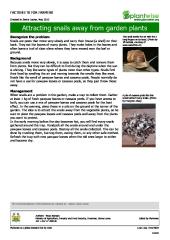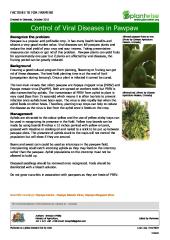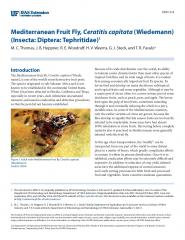Papaya or Carica papaya otherwise known as Mam'o or Melon Tree is one of the most popular trees cultivated for its tropical fruits. It grows up to 10 m tall with a non-woody, hollow bole of up to 30 cm in diameter. The fruit is consumed raw or cooked. It can be eaten fresh when ripe or as vegetable , processed, preserved, or dried. The seeds are used as spice;the male flowers and young leaves are also edible when cooked. Papaya is also valued for its medicinal uses. It is a source of the enzyme papain which is a digestive stimulant, and can be used in wounds. The fruit is used to treat diabetes, hypertension, warts, diarrhoea, high blood pressure, and painful womb. The leaves are applied externally to wounds to aid in the healing process. It is cooked and used against malaria, irregular bowel movement in children, and threadworms and roundworms. Latex obtained from the trunk is used in wounds as well, and in gums to relieve toothache. Young leaves are used as mulch.
Carica papaya is an evergreen Tree growing to 8 m by 4 m at a fast rate.
It is hardy to zone 10 and is frost tender. The flowers are pollinated by Bees, Moths, Wind. The plant is not self-fertile.
It is noted for attracting wildlife.
Suitable for: light , medium and heavy soils and prefers well-drained soil. Suitable pH: acid, neutral and basic soils and can grow in very acid and very alkaline soils.
It cannot grow in the shade. It prefers moist soil. The plant is not wind tolerant.
Papaya succeeds in tropical and subtropical areas, where it can be found between 32°N and S. It produces best at elevations below 900 metres, though it can also succeed as high as 2,100 metres near the equator. It grows best in areas where annual daytime temperatures are within the range 21 - 30°c, but can tolerate 12 - 44°c. It can be killed by temperatures of -1°c or lower. It prefers a climate with well distributed rainfall and a mean annual rainfall in the range 1,500 - 2,500mm, but tolerates 1,000 - 3,000mm. Low temperatures cause smaller fruit size and low quality. Prefers a sunny position in a deep, humus- rich soil. Requires a well-drained, well-aerated soil, trees can die within a few days if the soil becomes waterlogged. Grows best in a position sheltered from strong winds. Plants produce masses of easily damaged feeding roots near the surface and so are best hand weeded when young and given a good organic mulch as they grow. Prefers a pH in the range 5.5 - 7, tolerating 4.5 - 8. A very productive plant, it can start to crop when only 6 months old and can produce fruit all year round. Yields of between 22 - 56 tonnes/ha of fresh fruit are obtained in Hawaii and yields up to 80 tones/ha have been reported. The yields are highest in the second and third year and they then decline rapidly. The productive life of a tree is very short, yields have declined sharply by the time it is four years old. There are many named varieties. Individual plants can bear only male flowers, only female flowers or hermaphrodite flowers. One male plant will be enough to fertilize 6 or more females. Hand pollinated fruits ripen after about 150 - 240 days.
HabitatsNot known as a truly wild plantResources
Attracting snails away from garden plants

FACTSHEETS FOR FARMERSCreated in
Sierra Leone
,
May2012
https://www.plantwise.org/KnowledgeBank/factsheetforfarmers/20127801281Attracting snails away from garden plants
FACTSHEETS FOR FARMERS
Cabi Plantwise Knowledge Bank
www.plantwise.org
Created in
Sierra Leone
,
May
2012Control of viral diseases in pawpaw

FACTSHEETS FOR FARMERSCreated in
Grenada
,
October2012
https://www.plantwise.org/KnowledgeBank/factsheetforfarmers/20137804486Control of viral diseases in pawpaw
FACTSHEETS FOR FARMERS
Cabi Plantwise Knowledge Bank
www.plantwise.org
Created in
Grenada
,
October
2012IN37100

EENY-214
Mediterranean Fruit Fly, Ceratitis capitata (Wiedemann)
(Insecta: Diptera: Tephritidae) 1https://edis.ifas.ufl.edu/pdffiles/IN/IN37100.pdfIN37100IN37100
EENY-214
EDIS - Electronic Data Information Source - UF/IFAS Extension
Mediterranean Fruit Fly, Ceratitis capitata (Wiedemann)
(Insecta: Diptera: Tephritidae) 1
Major pests
- Achatina fulica
Amblypelta cocophaga
Amblypelta lutescens
Aonidiella orientalis
Aphis gossypii
Aphis spiraecola
Asperisporium caricae
Bactrocera carambolae
Bactrocera cucumis
Bactrocera dorsalis
Bactrocera melanotus
Bactrocera passiflorae
Bactrocera tryoni
Bemisia tabaci
Bemisia tabaci
Brevipalpus californicus
Brevipalpus phoenicis
Candidatus Phytoplasma australiense
Chloris barbata
Choanephora cucurbitarum
Coereba flaveola
Colletotrichum dematium
Colletotrichum papayae
Commelina diffusa
Conogethes punctiferalis
Corynespora cassiicola
Corynothrips stenopterus
Corythuca gossypii
Drymaria cordata
Emilia sonchifolia
Empoasca papayae
Empoasca stevensii
Erinnyis alope
Erinnyis ello
Erwinia papayae
Eudocima fullonia
Euphorbia hirta
Eutetranychus orientalis
Ferrisia virgata
Frankliniella insularis
Glomerella cingulata
Haematonectria haematococca
Helicotylenchus dihystera
Heliotropium indicum
Howardia biclavis
Icerya samaraia
Leptostylus praemorsus
Loxigilla noctis
Macrophomina phaseolina
Meloidogyne incognita
Mikania micrantha
Mimosa pudica
Morganella longispina
Moroccan watermelon mosaic virus
Myzus persicae
Nipaecoccus nipae
Oidium caricae-papayae
Oligonychus gossypii
Papaya apical necrosis rhabdovirus
Papaya leaf curl virus
Papaya meleira virus
Papaya mosaic virus
Papaya ringspot virus
Paracoccus marginatus
Parasaissetia nigra
Parthenium hysterophorus
Paspalum paniculatum
Pectobacterium cypripedii
Phenacaspis papayae
Phenacoccus solenopsis
Phoma caricae-papayae
Phomopsis caricae-papayae
Phytophthora nicotianae
Phytophthora palmivora
Phytoplasma australasiae
Polyphagotarsonemus latus
Pratylenchus penetrans
Pseudaulacaspis pentagona
Pseudomonas caricapapayae
Pseudoparlatoria ostreata
Pythium aphanidermatum
Pythium vexans
Rickettsia sp.
Rotylenchulus parvus
Rotylenchulus reniformis
Setaria verticillata
Tetranychus cinnabarinus
Tetranychus fijiensis
Tetranychus kanzawai
Tetranychus marianae
Tetranychus piercei
Thrips parvispinus
Tobacco leaf curl virus
Tomato spotted wilt virus
Toxotrypana curvicauda
Trialeurodes variabilis
Veronicella cubensis
Minor pests
- Acyrthosiphon pisum
Adoretus versutus
Aleurocanthus woglumi
Aleurodicus dispersus
Alternaria alternata
Amaranthus spinosus
Anastrepha fraterculus
Anastrepha ludens
Anastrepha suspensa
Aonidiella aurantii
Aonidomytilus albus
Aphis nerii
Araecerus fasciculatus
Aspergillus niger
Aspidiotus destructor
Athelia rolfsii
Atherigona orientalis
Attacus atlas
Aulacaspis tubercularis
Bactrocera correcta
Bactrocera cucurbitae
Bactrocera frauenfeldi
Bactrocera jarvisi
Bactrocera kandiensis
Bactrocera musae
Bactrocera neohumeralis
Bactrocera xanthodes
Bactrocera zonata
Calonectria ilicicola
Candidatus Phytoplasma asteris
Candidatus Phytoplasma solani
Ceratitis capitata
Ceratitis rosa
Chalara elegans
Chickpea chlorotic dwarf virus
Chrysodeixis eriosoma
Chrysomphalus aonidum
Chrysomphalus dictyospermi
Cladosporium oxysporum
Cochliobolus lunatus
Colletotrichum brevisporum
Colletotrichum fructicola
Colletotrichum karsti
Colletotrichum magna
Crypticerya multicicatrices
Dactyloctenium aegyptium
Darna diducta
Enterobacter cloacae
Erysiphe diffusa
Euphorbia leaf curl virus
Eutetranychus africanus
Globisporangium debaryanum
Grapevine yellows phytoplasmas
Helicotylenchus multicinctus
Helicotylenchus pseudorobustus
Hemicriconemoides mangiferae
Hoplolaimus pararobustus
Icerya seychellarum
Lasiodiplodia theobromae
Leveillula taurica
Nicandra physalodes
Okra enation leaf curl virus
Oryctes rhinoceros
Panonychus citri
Papaya leaf curl Guandong virus
Pectobacterium atrosepticum
Penicillium digitatum
Pennisetum clandestinum
Pentalonia nigronervosa
Phytophthora capsici
Phytophthora tropicalis
Phytoplasma aurantifolia
Planococcus citri
Podosphaera xanthii
Pseudococcus jackbeardsleyi
Pseudoidium neolycopersici
Pythium myriotylum
Rastrococcus invadens
Rhabdoscelus obscurus
Rhopalosiphum maidis
Rhynchophorus palmarum
Rottboellia cochinchinensis
Scutellonema brachyurus
Scutellonema clathricaudatum
Spodoptera eridania
Spodoptera frugiperda
Tetranychus mexicanus
Tobacco streak virus
Tomato leaf curl Albatinah virus
Xyleborus perforans
Xyleborus volvulus
